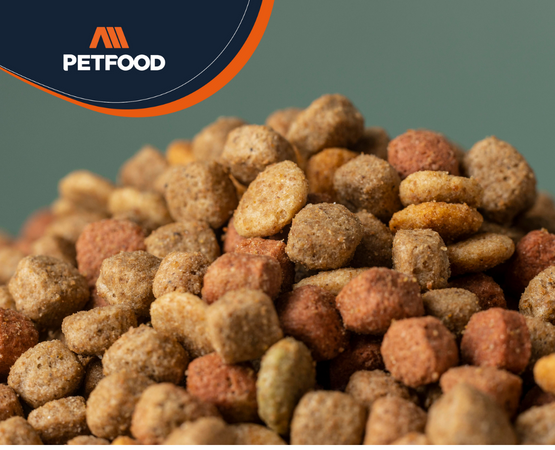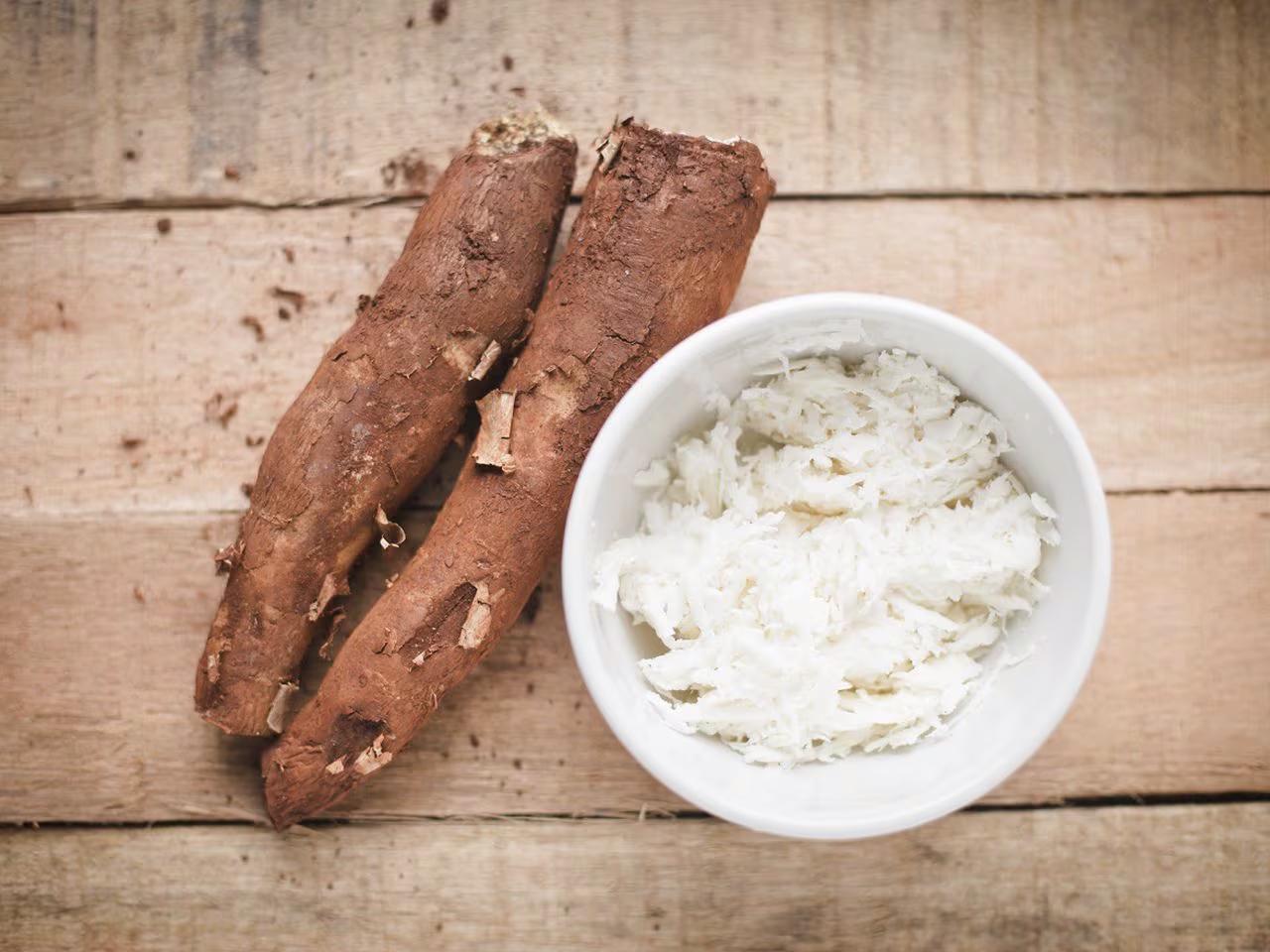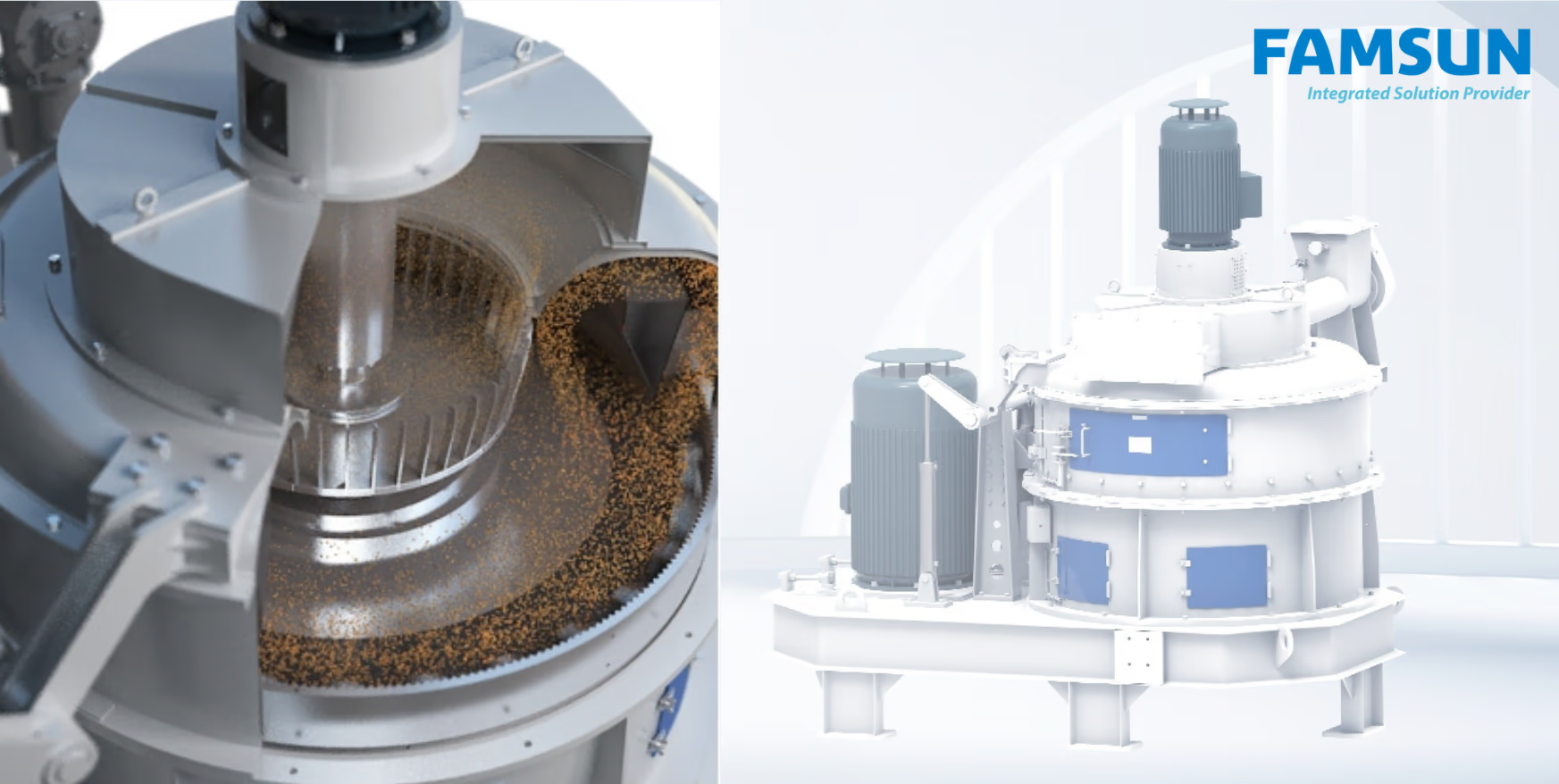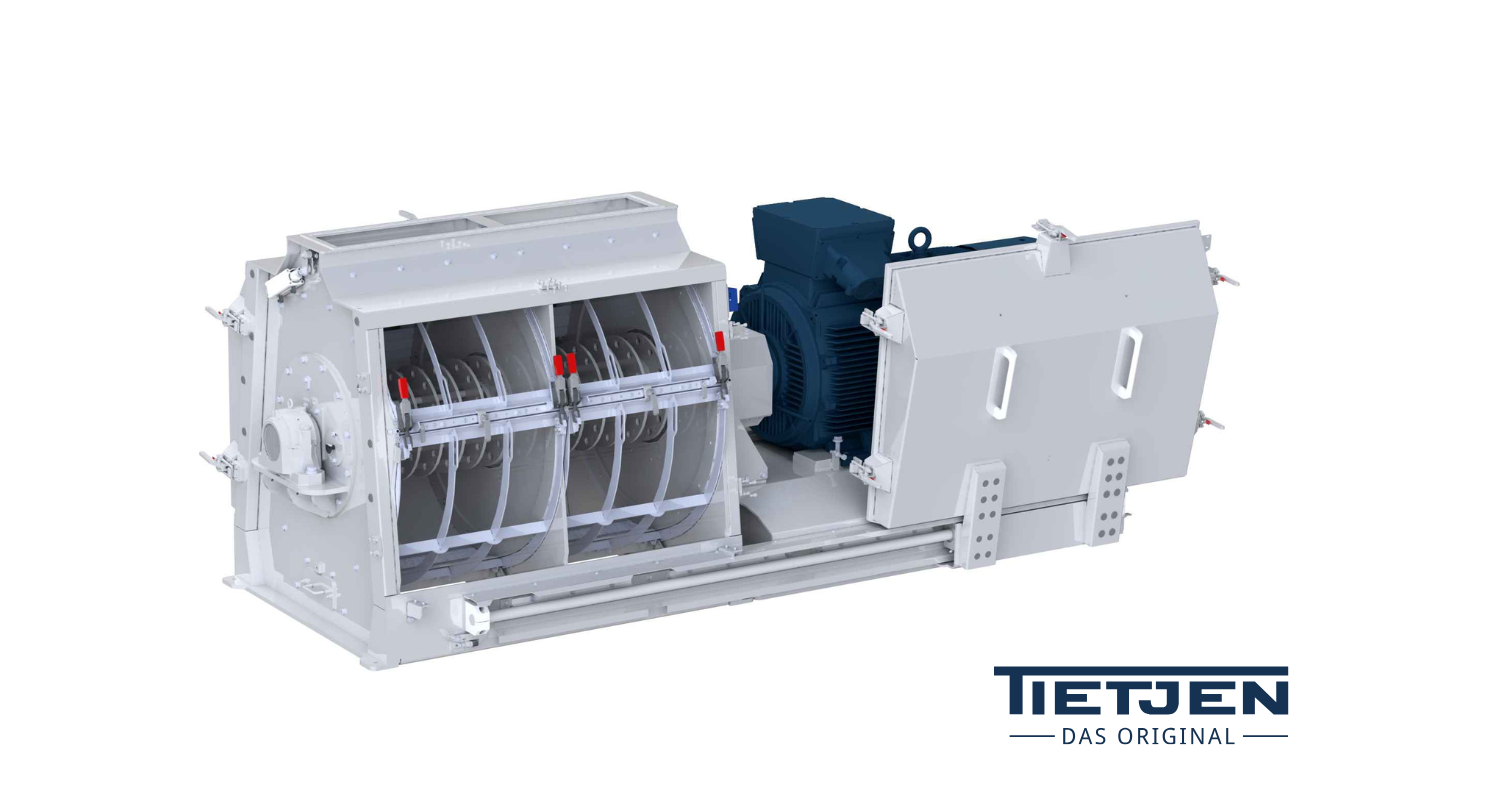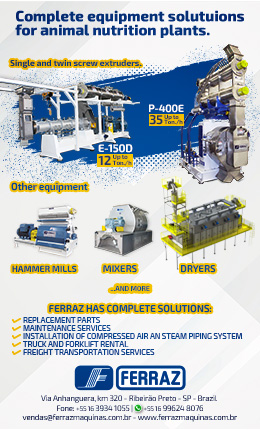The grinding process consists of reducing and standardizing the particle size of raw materials, increasing the contact surface, and consequently improving steam and water absorption during the extrusion process, favoring dough cooking. All these aspects affect the texture and uniformity, avoiding partially cooked hard particles in the product.
Granulometry is influenced by the configuration of the mill and the parts that compose it. Before entering the mill, the presence of sieves and magnets will prevent foreign materials from reaching equipment, damaging parts, and impairing grinding quality. At the mill exit, to ensure the grinding quality, it is necessary to monitor the granulometry, which can be affected by perforated sieves or worn hammers, which will contribute to lower grinding efficiency and quality.
Better steam and water absorption in extrusion, as a result of quality grinding, improves the efficiency of starch gelatinization, the process of transforming granular starch into a viscoelastic paste.
Quality grinding and cooking allow better kibble expansion, formation, and structure. In general, product expansion is directly related to texture, being the products with the highest expansion, the most crunchy ones.
Some of the parameters used to assess the degree of cooking of dietary ingredients that are subjected to extrusion are density and water absorption rate. Foods with high density and low water absorption are signs of poorly expanded products, with inadequate starch gelatinization and less nutrient utilization (Camire, 2000).
The density of the expanded products is an important characteristic because, even indirectly, in addition to the expansion index, it indicates the degree of transformation of the starch granule.
In the drying process, heat transfer is responsible for liquid evaporation, present in the food, and mass transfer by water movement from the food interior to its surface, and from there to the environment. Therefore, drying is linked to both environmental and intrinsic conditions of the material being dried, which influence evaporation and water molecules diffusion rates, respectively.
Therefore, a kibble with good expansion and a uniform structure allows air to pass through it evenly, drying it properly, unlike a product that was compacted because it did not have an adequate process.
Even the kibble expansion and structure, also interfere with the process of applying the liquid. The croquettes must have the capacity to absorb fat since their efficiency depends on the size and porosity of the extrudate. A well-extruded product with a good structure provides better penetration and retention of the liquid coating.
Cereals (rice, corn, and wheat) are the most widely used starch sources in extruded dry food for dogs and cats. Some studies have shown that, if correctly extruded, cereal starch has an apparent digestibility greater than 95% for cats (DE OLIVEIRA et al., 2008) and 98% for dogs (CARCIOFI et al., 2008).
However, starch digestibility can be affected by factors such as starch composition and physical form, protein-starch interactions, cell integrity, and the physical form of the feed.
BAZZOLI (2007) evaluated the influence of milling of rice, corn, and sorghum on the apparent digestibility coefficient (ADC) of nutrients and fecal score in diets for dogs and found that there was a difference and interaction between carbohydrate sources in different millings. Mean starch and non-extractive nitrogen (ENN) ADCs were similar for the maize and sorghum diets, and higher for the rice-based diet. For maize and sorghum, coarse grinding had a negative effect, with values lower than those of diets prepared with fine and medium grinding.
Still according to BAZZOLLI (2007), regarding the fecal score, there was no ingredient effect either, only grinding. The evaluation of the contrasts shows that the higher the granulometry, the worse the fecal score for the three starch sources, and the worst score, being obtained with milled rice in a coarse granulometry.
The evidence shows that the higher the granulometry, the worse the fecal score of the diets, a fact that is probably due to the decrease in the starch gelatinization index, which results in less dry matter in the feces and a worse score. In cats, KIENZLE (1993) found that the ADC of starch in a diet containing coarsely ground raw corn was 72%. When the corn was cooked or finely ground, the ADC of the starch was 100%.
Starch digestibility alters and largely determines the postprandial blood glucose wave and the insulin response of the animal. In this way, the faster and more complete the digestion, the faster and more intense the triggered curve. This is an aspect that must be taken care of when thinking about food for animals with diabetes mellitus, obesity, pregnancy, cancer, and advanced age, which need greater control of the glycemic curve.
Therefore, we conclude that grinding is a key point in high-quality product development. It must be standardized, according to the reality of each factory, in addition to taking into account product purpose and life stage or state of health of the pet that will consume the food.
Authors: Luana Pucca, Ludmila Barbi y Erika Stasieniuk
Source: All Pet Food Magazine
You could be interested: What is Pulverization? Definition & Applications
About author
Ludmila Barbi T. BomcompagniBrazilian living in Mexico City, veterinarian with a master's degree in Animal Nutrition. Having experience in pet food formulation and raw materials evaluation, she currently dedicates to the study and development of functional additives for pet food nutrition.
About author
Erika StasieniukAnimal Scientist graduated from UNESP —Botucatu, with a Master’s degree (2009) and Ph.D. (2013) in Animal Science, with an emphasis on Companion Animal Nutrition, from UFMG— Belo Horizonte. With over 15 years of experience in the pet food industry, she has worked in Research and Development, formulation of dry extruded foods, premixes, and supplements for dogs, cats, and fish, with experience in both national and multinational companies. Since 2019, she has been the founder of SFA Consultoria, providing technical and strategic support to national and international companies that produce food and ingredients for dogs and cats. She also trains professionals through online courses and mentorships, with more than 200 students in Brazil and abroad. She is currently also a postgraduate professor at Faculdade CTA, where she teaches the subject of Dry Extruded Food Formulation for Dogs and Cats. You can find her on Instagram: @erikastasieniuk










